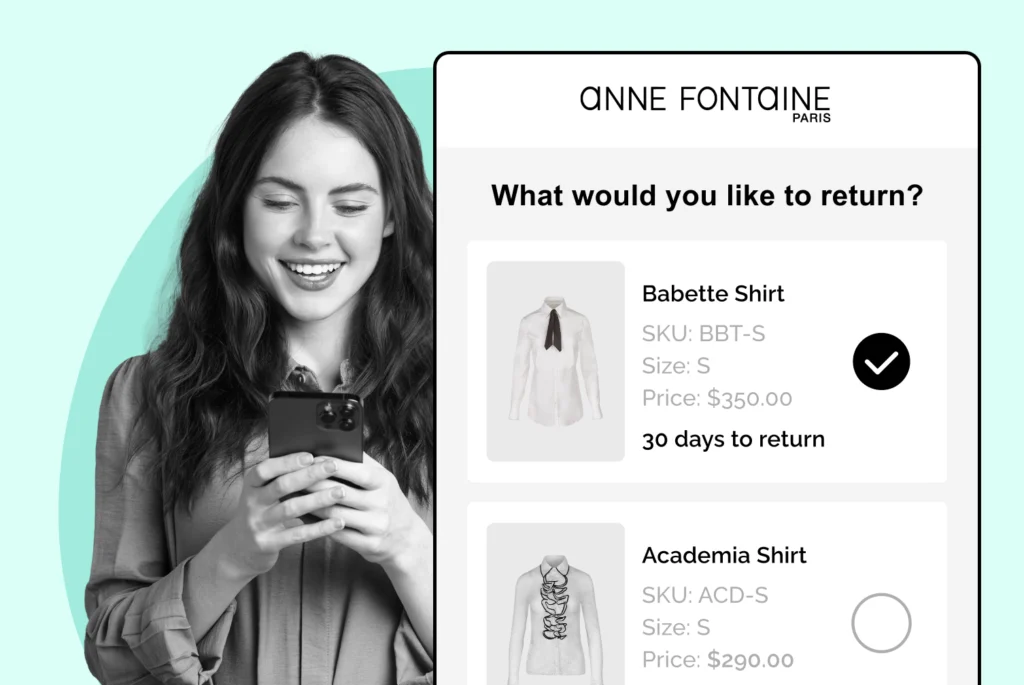
30-day Return Window: Weighing the Pros and Cons
Explore the pros and cons of a 30-day return window for buyers and sellers. Understand the impact on purchases and sales!
Shipping, Tracking & Notifications
Boost customer experience and reduce support tickets
Realtime order and shipment tracking
Proactive order and shipping notifications
AI-Enhanced Discounted Labels
Predictive pre-purchase estimated delivery dates
Self-Serivce branded order tracking
Effortless experience delivered
Identify and Resolve Order Issues
Realtime order and shipment tracking
Make returns profitable and delight customers
Flexibility to define any return destinations & conditions
Simplify returns for your customers and team
Incentivize exchanges over returns
Returns management made easy for your team
Returns management made easy for your team
Easy claims and smart upsells
Understand why your customers are returning
In-Store & Curbside Pickup
Unify the online and the in-store experience
Hassle-free pickup experience for customers
In-Store dashboard to keep operations streamlined
In-Store and Online orders unified
Drive foot-traffic to your stores
Shipping, Tracking & Notifications
Boost customer experience and reduce support tickets
Realtime order and shipment tracking
Proactive order and shipping notifications
AI-Enhanced Discounted Labels
Predictive pre-purchase estimated delivery dates
Self-Serivce branded order tracking
Effortless experience delivered
Identify and Resolve Order Issues
Realtime order and shipment tracking
Make returns profitable and delight customers
Flexibility to define any return destinations & conditions
Simplify returns for your customers and team
Incentivize exchanges over returns
Returns management made easy for your team
Returns management made easy for your team
Understand why your customers are returning
In-Store & Curbside Pickup
Unify the online and the in-store experience
Hassle-free pickup experience for customers
In-Store Dashboard to keep operations streamlined
In-Store and Online orders unified
Drive foot-traffic to your stores
Boost customer experience and reduce support tickets
Realtime order and shipment tracking
Proactive order and shipping notifications
AI-Enhanced Discounted Labels
Predictive pre-purchase estimated delivery dates
Self-Serivce branded order tracking
Effortless experience delivered
Make returns profitable and delight customers
Flexibility to define any return destinations & conditions
Simplify returns for your customers and team
Incentivize exchanges over returns
Returns management made easy for your team
Equip your team for precise return checks.
Easy claims and smart upsells
Understand why your customers are returning
Unify the online and the in-store experience
Hassle-free pickup experience for customers
In-Store Dashboard to keep operations streamlined
In-Store and Online orders unified
Drive foot-traffic to your stores
Find the answer to all your questions
Take a step by step trip through our functionality to see how we can improve your ecommerce processes.
Explore the most comon questions about WeSupply
Calculate the ROI that WeSupply can bring you
Read actionable articles on how to optimize your post-purchase experience and decrease support tickets
Get inspired by stories of how our customers implemented an effortless post-purchase experience
Wondering if WeSupply is a good fit for you? Read through our use cases to see how we can help you increase conversion & improve CX!
A Deep Dive into Top Companies' Order Tracking & Returns Strategy
Find the answer to all your questions
Explore the most comon questions about WeSupply
Calculate the ROI that WeSupply can bring you
Request a no strings attached review of your current shopping experience and missed conversion opportunities
Take a step by step trip through our functionality to see how we can improve your ecommerce processes.
Read actionable articles on how to optimize your post-purchase experience and decrease support tickets
Get inspired by stories of how our customers implemented an effortless post-purchase experience
A Deep Dive into Top Companies' Order Tracking & Returns Strategy
Wondering if WeSupply is a good fit for you? Read through our use cases to see how we can help you increase conversion & improve CX!
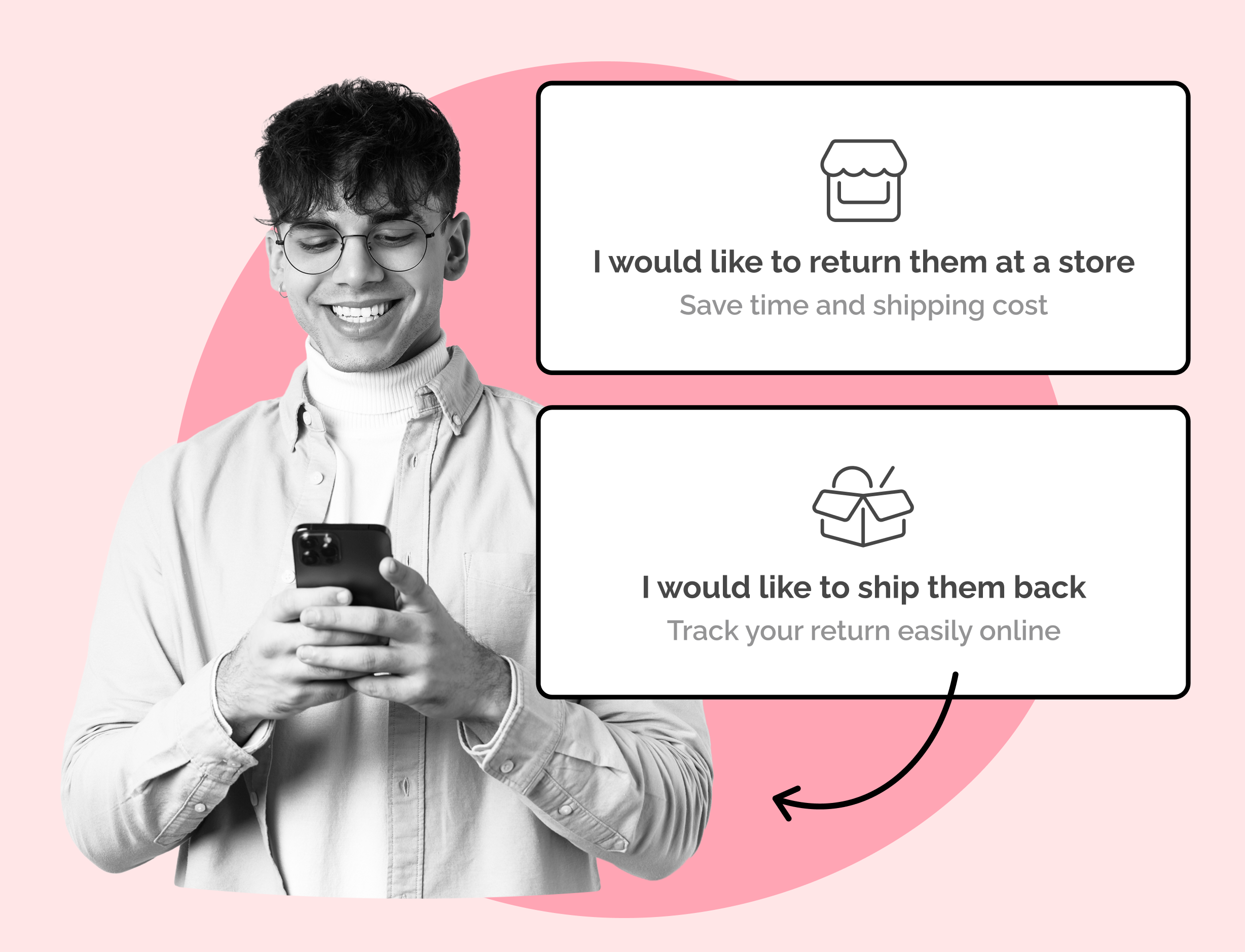
Businesses need to understand the differences between Gen X and other generations to create effective marketing and retail strategies. Gen X, those born between 1965 and 1980, have distinct shopping habits, values, and preferences. This article delves into these characteristics and compares them with Millennials and Gen Z, helping brands tailor their approaches for each generation.
Understanding the unique shopping habits of Gen X, Millennials, and Gen Z is crucial for retailers to stay relevant.
Retailers need to adapt their marketing strategies and shopping experiences to cater to the preferences of each generation, from in-store visits to seamless online shopping.
Sustainability, ethics, and brand loyalty are increasingly important across generations, with especially high expectations from Gen Z.
The stakes of personalized retail have never been higher. With multiple generations coexisting in the market, each bringing unique life experiences, tech exposure, and cultural shifts, understanding these differences is key to staying relevant in the retail landscape. Retailers must evolve or risk alienating key customer segments, as one-size-fits-all approaches are no longer effective.
Generational differences in shopping habits stem from a variety of factors. For example, the millennial generation, shaped by economic instability and social values, has different expectations and behaviors compared to Gen X, who are known for their self-reliance and skepticism. Gen Z, on the other hand, are mobile-first shoppers who value transparency and speed. Recognizing these differences allows retailers to tailor their strategies and create more engaging and satisfying shopping experiences for each generation.
Staying ahead in a rapidly changing consumer landscape requires a deep understanding of generational habits. Utilizing these insights enables retailers to craft targeted marketing campaigns, refine product offerings, and boost customer loyalty. The goal is to not only meet but exceed the expectations of Gen X, Millennials, and Gen Z, ensuring long-term success in an ever-evolving retail landscape.
Understanding the shopping habits of different generations starts with identifying who they are. Generation X, born between 1965 and 1980, are known for their self-reliance and pragmatic approach to life. This age group values quality and durability in their purchases, often prioritizing trusted brands that offer stability and reliability, especially when they are the same age as their peers. The average age of this generation highlights their unique perspectives on consumer behavior, especially in contrast to the previous generation.
The millennial generation, also known as Generation Y, includes people born between 1981 and 1996, a range often referred to as birth years. Shaped by economic instability and social values, most millennials have become digital natives who are comfortable navigating online shopping platforms and expect seamless multichannel experiences. Today’s young Americans and young adults value convenience, ethical sourcing, and are often more open to trying new brands and experiences from a young age, making them part of the largest generation, the first generation to grow up with the internet, distinct from the baby boomers and other generations, and also paving the way for post millennials. Young people are increasingly influencing market trends and brand loyalty, with millennials rising as a key demographic in shaping these trends.
Generation Z, or Gen Z, refers to those born between 1997 and 2012. This new generation of shoppers is mobile-first and highly values transparency and speed in their shopping experiences. Gen Z consumers are driven by sustainability, inclusivity, and social proof, making them savvy shoppers who expect brands to align with their values. Gen Z’s focus on these factors is particularly evident among generation alpha and gen zers.
Understanding the unique characteristics and priorities of each separate generation is crucial for retailers looking to create meaningful connections and drive customer loyalty.
Shopping channel preferences vary significantly between generations, influenced by their comfort with technology and desire for different shopping experiences. Gen Xers, for example, prefer in-store shopping, with 73% valuing the physical touchpoints and traditional discovery methods such as TV and mailers. For this generation, the tactile experience of shopping in-store is irreplaceable.
Millennials, on the other hand, are comfortable with online shopping behavior but expect a seamless multichannel experience. They are adept at navigating both online and offline channels, seeking convenience and flexibility in their shopping journeys. This generation values the ability to research products online, make purchases through mobile apps, and shop online at online stores for items to pick up in-store.
Gen Z shoppers are true digital natives, often turning to social media platforms like TikTok and Instagram to discover and purchase products. Their shopping habits are heavily influenced by digital technology, social commerce, social media trends, and influencers, making mobile device shopping experiences essential for capturing their attention.
Retailers must recognize that different generations have different entry points into the shopping journey, and catering to these preferences is key to success.
The factors driving purchase decisions vary across generations and are influenced by their unique values and priorities. For Gen X, quality, durability, and brand trust are paramount. While price is an important consideration, it should not come at the expense of value. This generation seeks products that offer long-term reliability and are willing to invest in brands they trust.
Millennials, meanwhile, prioritize experiences over possessions. They value convenience and ethical sourcing, often choosing brands that align with their social values. For this generation, consumer behavior is influenced by the story behind the product and the ease of the shopping experience, which are key drivers of purchase decisions.
Gen Z is hyper-focused on sustainability, inclusivity, and social proof. They expect brands to be transparent about their practices and to actively promote diversity and environmental responsibility. Emotional connection and authenticity are increasingly vital across all generations, making it essential for retailers to build genuine relationships with their customers.
Sustainability and ethics are becoming increasingly important to consumers, with some generations leading the charge. Gen Z, in particular, expects eco-friendly practices and social responsibility from the brands they support. This generation is highly attuned to issues of sustainability and inclusivity, and they demand transparency from retailers.
Millennials also place a high value on sustainability, expecting brands to use sustainable packaging and maintain ethical supply chains. They are drawn to companies that prioritize environmental and social responsibility, often making purchasing decisions based on a brand’s commitment to these values.
Gen X is catching up, particularly in areas related to health, wellness, and environmental impact. While they may not be as vocal as younger generations, their growing awareness of sustainability issues is influencing their shopping behaviors, much like older generations and preceding generations.
Retailers must be transparent and avoid greenwashing, as consumers are increasingly discerning.
Brand loyalty is evolving, with each generation displaying different levels of commitment to the brands they love. Gen X shows strong loyalty to trusted brands, with 75% preferring stability over novelty. This generation values consistency and reliability, often sticking with brands that have proven themselves over time.
Millennials, however, are loyal to values rather than just brands. They are more open to switching brands if they find better customer experiences or if a brand’s values align more closely with their own. This generation seeks authenticity and meaningful connections with the brands they support.
Gen Z is the least brand-loyal generation, requiring continuous value and authenticity to earn their loyalty. They are influenced by trends and social media, making it crucial for brands to stay relevant and genuine. Loyalty programs and personalization must evolve to meet the expectations of each generation, ensuring that brands can build and maintain strong customer relationships.
Social influence and media consumption play a significant role in shaping gen z shopping habits across generations. Gen Z consumers are heavy users of social media, with their purchase behavior driven by platforms like TikTok and Instagram and the influence of social media influencers. Their shopping habits are heavily influenced by viral trends and peer recommendations.
Millennials blend peer reviews, influencers, and traditional research, including insights from the Pew Research Center, when making purchasing decisions. They value the opinions of their peers and are influenced by social media, but they also rely on product reviews and detailed information. This generation seeks a balance between social influence and thorough research, including influencer marketing.
Gen X, meanwhile, leans on traditional media such as TV and search engines, as well as platforms like Reddit for product reviews and discussions. They value detailed information and are less influenced by social media trends. Retail strategies must diversify content and ad placement to effectively reach each generation, ensuring that messaging resonates with their unique media consumption habits.
Spending habits and financial priorities differ across generations, influenced by their economic experiences and life stages. Gen X has high-income potential and focuses on retirement and debt reduction, making them less impulsive in their spending. This generation values financial stability and tends to make more calculated purchasing decisions.
Millennials, burdened by student debt and shaped by the Great Recession, value deals but also spend on lifestyle experiences. They seek value for money and are willing to invest in experiences that enhance their quality of life. This generation is known for being savvy shoppers who look for the best deals and are mindful of their financial constraints.
Gen Z is still gaining spending power but prioritizes meaningful purchases and digital payments. They are more likely to make purchases online and prefer brands that offer convenient and secure payment options. Financial mindset impacts everything from average order value (AOV) to return behavior, making it essential for retailers to understand and cater to the financial priorities of each generation.
Work-life balance plays a crucial role in shaping shopping patterns for each generation. Gen X introduced the concept of work-life balance and prefers flexible, time-saving shopping experiences. They value convenience and often seek out shopping options that fit into their busy schedules.
Millennials seek meaningful work and integrate shopping into their busy lifestyles. They are adept at multitasking and often make purchases on the go, using mobile apps and online platforms to save time. This generation values efficiency and looks for shopping experiences that seamlessly fit into their daily routines.
Gen Z values mental health and convenience, often shopping late hours or on their mobile devices. They prioritize their well-being and look for shopping options that offer flexibility and convenience. Brands must cater to different shopping rhythms and decision windows to effectively meet the needs of each generation.
Leadership values and influence in the marketplace vary across generations, shaping their expectations and preferences. Gen X emphasizes autonomy, pragmatism, and straight talk in leadership and retail messaging. They value transparent and straightforward communication from brands and leaders, which is a key political aspect of their engagement.
Millennials expect emotional intelligence, brand purpose, and inclusion from leaders. They are drawn to brands that demonstrate empathy and a commitment to social values. This generation values leaders who are emotionally intelligent and inclusive, reflecting their own priorities.
Gen Z looks for bold, disruptive leaders who walk the talk on social issues. They expect brands to take a stand on important issues and to be vocal about their commitments. Retailers must reflect these values in their tone, voice, and executive presence to resonate with Gen Z and build trust.
The shopping psychology and research habits of each generation are influenced by their unique preferences and behaviors. Gen X is 7% more likely to research before buying, valuing detailed specifications and reviews. They take a methodical approach to shopping, seeking out comprehensive information before making a purchase.
Millennials are research-driven but responsive to user experience (UX) and curated recommendations. They value personalized shopping experiences and are influenced by recommendations based on their preferences. This generation appreciates a seamless and intuitive shopping journey.
Gen Z scans multiple platforms quickly and is influenced by viral trends and peer content. They are adept at navigating social media and online platforms, making quick decisions based on the latest trends. Optimizing product pages, reviews, and comparison tools is essential for capturing the attention and trust of Gen Z shoppers.
Winning with every generation in the future retail landscape requires a nuanced and adaptive approach. Retailers must design omnichannel experiences that align with the shopping behaviors of each generation. For instance, while Gen X might prefer in-store experiences, Millennials and Gen Z expect seamless integration between online and offline channels.
Content marketing and messaging strategies should be diversified to cater to the unique preferences of each generation. This includes leveraging traditional media for Gen X, social media for Gen Z, and a blend of both for Millennials. Embracing new technologies is crucial, but it’s equally important not to alienate those who prefer traditional shopping methods.
Building loyalty in this diverse landscape means moving away from one-size-fits-all approaches and towards personalized experiences. Retailers must ensure their ethical practices are not just performative but visible and actionable, as this transparency will resonate across all generations.
Combat inconvenience with proactivity & self service
Book a quick call with our experts to see how WeSupply can help you make returns easy for your customers with a beautiful, self-service solution that makes their experience easier while also providing new ways to lower costs and earn back revenue.
Understanding the unique shopping habits of Gen X, Millennials, and Gen Z is essential for retailers aiming to stay competitive. Each generation has distinct preferences, from Gen X’s in-store loyalty to Gen Z’s mobile-first approach. WeSupply helps retailers bridge these generational gaps with features that enhance the shopping experience for every customer segment.
Personalized Communication: Tailor notifications and updates based on customer preferences, boosting satisfaction across generations.
Sustainability Tracking: Highlight eco-friendly practices and offer transparent information, appealing to Gen Z’s values.
Branded Return Portals: Build brand trust with Gen X by offering reliable and consistent return experiences.
Mobile-Optimized Interfaces: Capture the attention of Gen Z with user-friendly, mobile-first designs.
Data-Driven Insights: Understand customer behavior and tailor marketing strategies to match generational preferences.
With WeSupply, retailers can effortlessly create personalized and flexible shopping journeys that resonate with Gen X, Millennials, and Gen Z—driving customer loyalty and long-term success. Ready to bridge the generational gap and boost customer loyalty? Book a demo with WeSupply today!
Simplify Returns for Your Customers and Support Team
Book a quick call with our experts to see how WeSupply can help you: simplify the Return experience with just a few clicks, reduce customer service calls and manual processing, notify your customer about their refund, automate returns and reduce user error.
Gen X, Millennials, and Gen Z may all buy from you—but they won’t shop, decide, or engage in the same way. Retailers that treat generational insights as strategic data—not stereotypes—will thrive in 2025 and beyond. Understanding the unique shopping habits and preferences of each generation is key to creating personalized and engaging retail experiences.
Incorporating these insights into your retail strategy means recognizing the distinct needs and values of each generation. From the quality and durability valued by Gen X to the convenience and ethical sourcing prized by Millennials, and the sustainability and inclusivity demanded by Gen Z, each generation brings its own set of expectations to the marketplace.
Tailoring retail experiences to meet these expectations builds lasting loyalty and drives success in a competitive landscape. Remember, one size doesn’t fit all. Embrace the diversity of your customer base and leverage generational insights to create impactful retail experiences that resonate with every shopper.
To thrive in today’s market, retailers must understand the unique shopping habits of Gen X, Millennials, and Gen Z. From Gen X’s in-store loyalty to Gen Z’s mobile-first mindset, each generation has distinct expectations shaped by their experiences and values. Adapting strategies to meet these diverse needs is crucial for maintaining relevance and driving customer loyalty.
WeSupply helps retailers bridge these generational gaps by offering an omnichannel experience that seamlessly connects online and offline touchpoints, meeting the expectations of both Millennials and Gen Z. It enables personalized communication by tailoring notifications and updates based on customer preferences, boosting satisfaction across generations. With sustainability tracking, WeSupply highlights eco-friendly practices and offers transparent information, appealing to Gen Z’s values. Additionally, branded return portals help build trust with Gen X by providing reliable and consistent return experiences. The platform’s mobile-optimized interfaces capture the attention of Gen Z with user-friendly, mobile-first designs, while data-driven insights empower retailers to understand customer behavior and develop marketing strategies that resonate with each generation.
By leveraging WeSupply, retailers can create more engaging and satisfying shopping experiences that foster lasting connections.
Ready to bridge the generational gap and boost customer loyalty? Get started with WeSupply today!
It’s super important to get generational differences in shopping habits because it helps retailers tailor experiences that really connect with each group. When businesses cater to what each generation wants, they can boost satisfaction and loyalty.
Gen X loves hitting the stores. Millennials want a smooth experience across channels, while Gen Z is all about shopping on their phones through social media like TikTok and Instagram. It’s clear that each generation has its own style when it comes to shopping!
Each generation has its own buying vibes: Gen X digs quality and brand trust, Millennials go for convenience and ethical sourcing, while Gen Z is all about sustainability and social proof. So, knowing what’s important to each group can really help you tailor your approach!
Sustainability and ethics are super important across generations, with Gen Z pushing for eco-friendly practices, Millennials wanting sustainable packaging, and Gen X becoming more aware of health and environmental impacts. It’s clear that caring for the planet is a growing trend that everyone values!
To build brand loyalty across generations, retailers should focus on personalized experiences, authenticity, and adapting loyalty programs to meet different expectations. It’s all about connecting with customers on their terms!
WeSupply offers an omnichannel experience that connects online and offline shopping, meeting Millennials’ and Gen Z’s digital expectations while providing consistent, branded return experiences to build trust with Gen X shoppers.
WeSupply provides sustainability tracking and transparent information, helping retailers meet Gen Z’s and Millennials’ eco-friendly expectations while strengthening brand loyalty through responsible practices.
Yes, WeSupply fosters brand loyalty through personalized communication, mobile-optimized interfaces for Gen Z, and consistent, branded return experiences for Gen X, ensuring retailers can engage all generations effectively.
Yes, WeSupply does have an official Shopify App. You can download and begin to integrate it with your Shopify store.
Yes, WeSupply has an official extension for Magento. The WeSupply x Magento integration allows for automating order tracking experiences, reducing customer inquiries, automating shipping email and SMS notifications, and providing a fully branded order tracking experience
Yes, WeSupply has an official BigCommerce App. You can integrate WeSupply with your BigCommerce store to improve your post-purchase customer experience.
Learn How To Create Successful Post Purchase Email Campaigns
Build an effective post-purchase email flow that helps you increase customer satisfaction and drive revenue growth!

Explore the pros and cons of a 30-day return window for buyers and sellers. Understand the impact on purchases and sales!
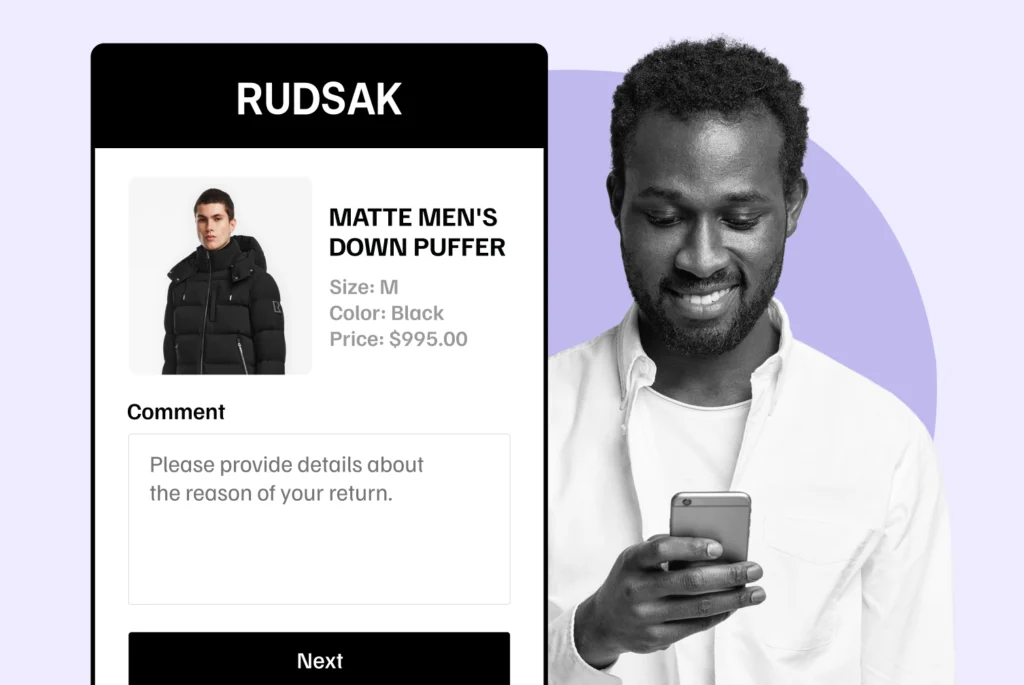
Explore the legal aspects of return policies and whether they constitute a legal agreement. Learn how this impacts your shopping experience. Read more.

Discover why including Shopify returns labels in the box can be a costly mistake. Six compelling reasons to reconsider this practice!
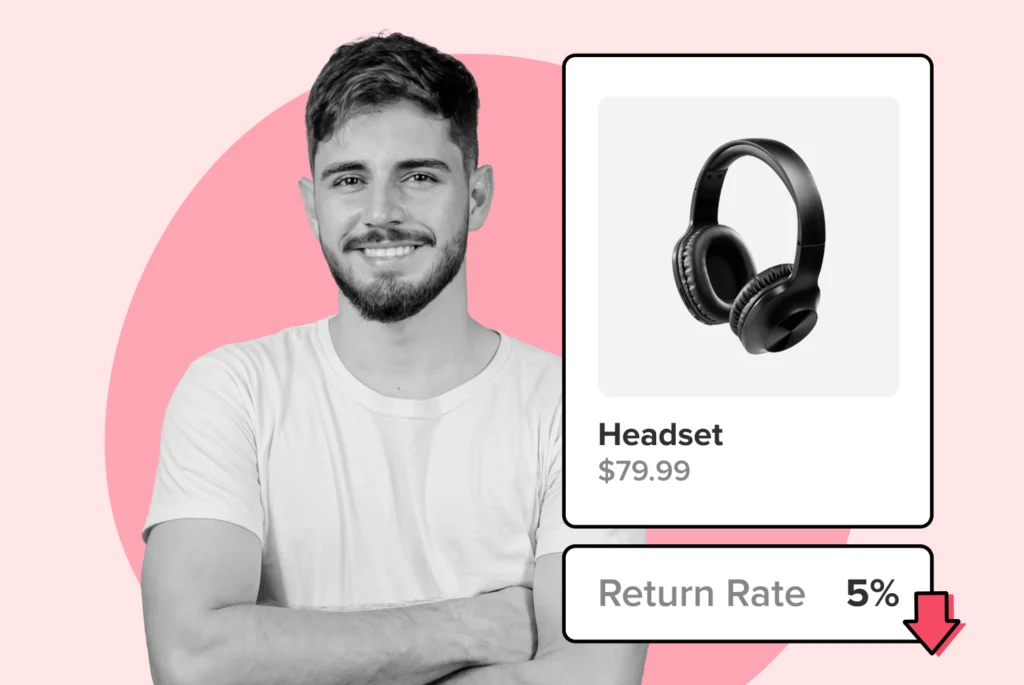
Learn how to optimize packaging for hassle-free returns and exchanges. Enhance customer satisfaction and streamline your process. Read the guide now!
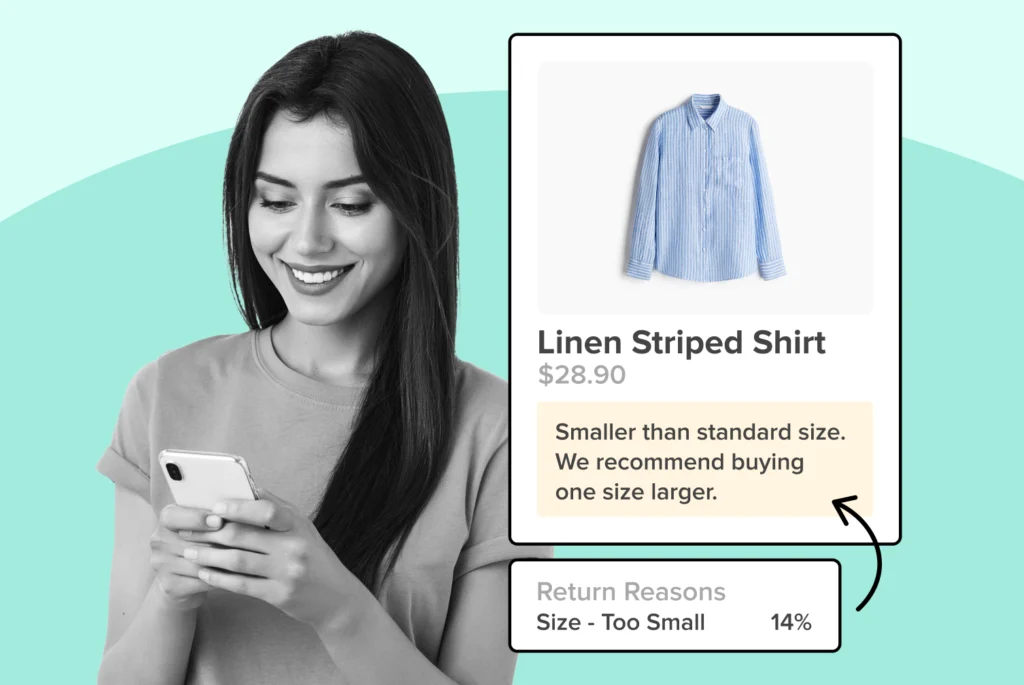
Learn effective communication strategies to improve sizing accuracy and reduce returns. Discover practical tips to enhance your online shopping experience.
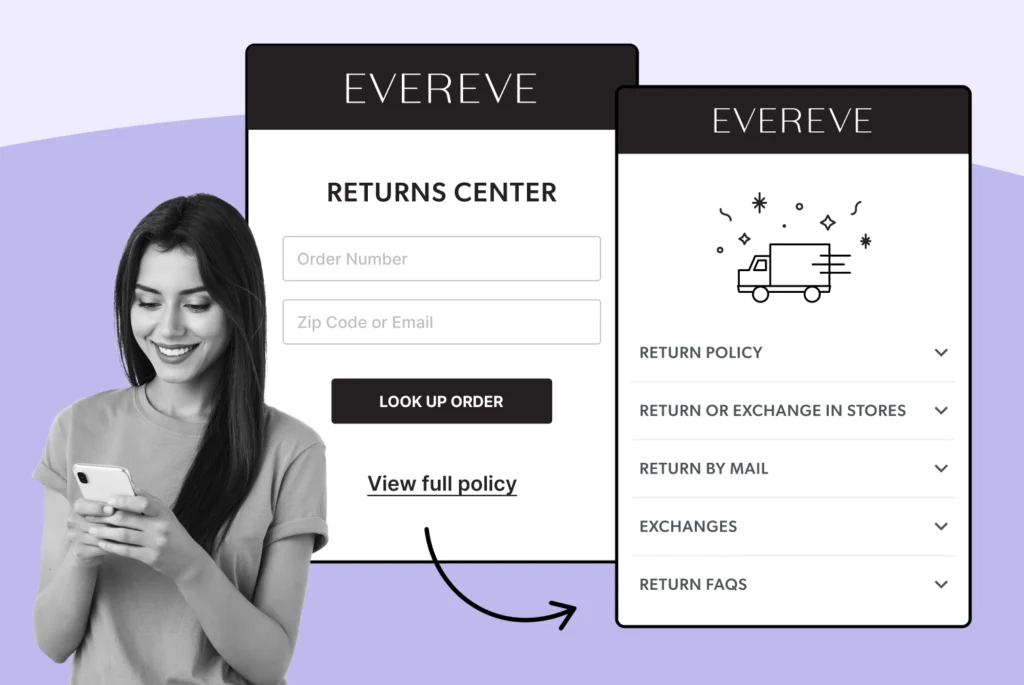
Explore the legal aspects of return policies and whether they constitute a legal agreement. Learn how this impacts your shopping experience. Read more.
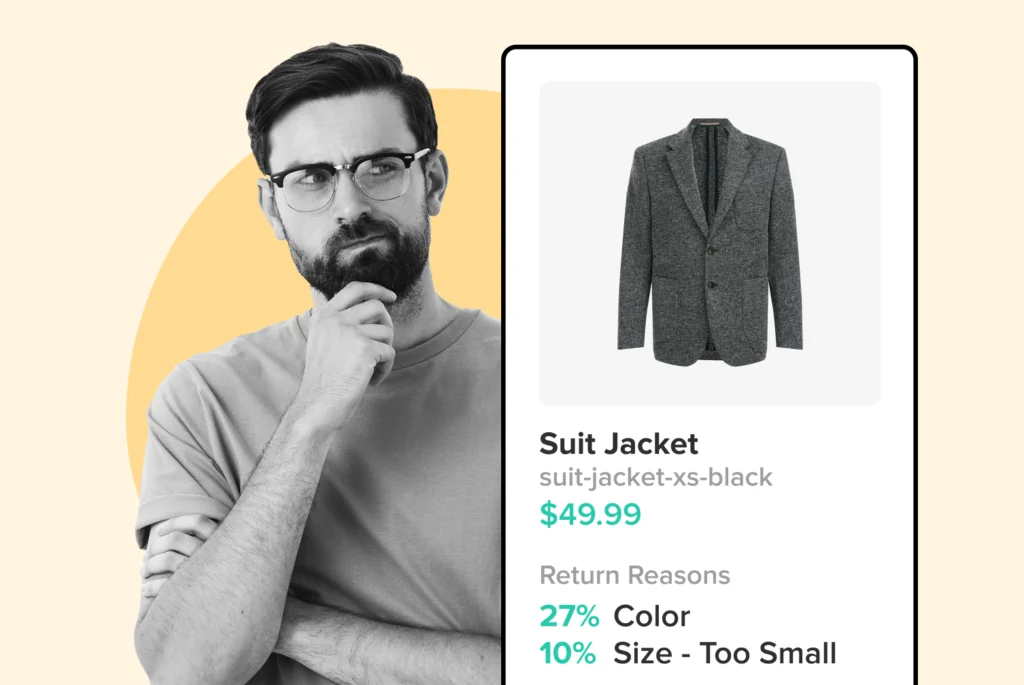
Discover 5 effective strategies to enhance your product photos and minimize returns. Improve customer satisfaction and boost sales—read the article now!

Learn how to optimize packaging for hassle-free returns and exchanges. Enhance customer satisfaction and streamline your process. Read the guide now!

Discover effective strategies to reduce shipping delays and enhance your logistics. Improve efficiency and keep your operations running smoothly. Read more!